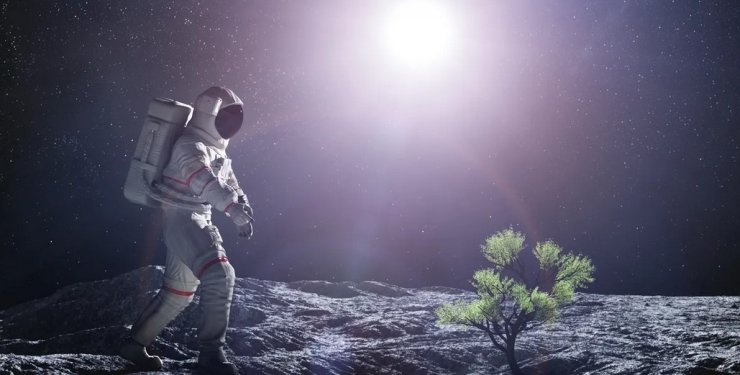
It seems that low gravity has its advantages, including increased resistance to cold.
Plants are able to survive in low-gravity conditions, such as on the Moon, according to the results of an important experiment described in two articles in the journals Microgravity Science and Technology and Acta Astronautica, IFLScience writes.
Farm on the Moon
When China’s Chang’e-4 lander landed on the Moon in early 2019, it carried seeds of four types of plants: cotton, Tal’s potatoes, and rapeseed. These plants were to grow in a special container with water. The authors of the articles point out that the experiment demonstrated that plants can grow on the Moon despite the strong radiation from the Sun and low gravity. After more than 4 years, scientists have published the final data on this important experiment, which suggests that growing plants on the Moon and Mars may become a reality.
It is important to note that Chang’e-4 did not attempt to grow plant seeds in lunar soil. Instead, the scientists wanted to find out how the low gravity of the Moon and the high dose of radiation would affect plants. The authors of the articles write that low gravity can help compensate for some of the other difficulties that people will have to face when growing plants outside the Earth.

Photo: CNSA
What grew on the Moon?
The results of a comparison of plants grown on the Moon with plants grown on Earth under identical conditions showed that lunar gravity, which is 6 times lower than on Earth, accelerates seed germination. Although only cotton was grown on the Moon, and rapeseed germinated on Earth along with cotton, this is still a huge achievement, scientists believe.
The biggest threat to the plant that grew on the Moon was the long lunar night, which began 9 Earth days after the landing of the Chang’e-4 spacecraft. The temperature inside the container dropped to minus 52 degrees Celsius, and it rose only after 18 Earth days. To ensure the purity of the experiment, scientists on Earth also lowered the temperature during seed cultivation.
When the lunar day came, it turned out that the sapling was still green and standing upright. This lunar sapling survived the second lunar day, which lasted more than 2 Earth weeks, although its growth stopped. Scientists believe that this was due to a lack of oxygen in the container. Scientists suggest that low gravity caused resistance to cold in the cotton on the Moon, which nevertheless did not survive the second lunar night.
The authors of the articles believe that the other three plants failed to grow on the Moon because the local temperature was not comfortable for them during the first five days of the experiment.
Growing plants on Mars
Scientists believe that growing plants on the Moon will be crucial for the long-term presence of humans here, as this way astronauts will be able to provide themselves with some food. But growing plants on Mars will be even more important. Delivering food from Earth to the Moon will be expensive, but delivering it to Mars is even more expensive. Mars has 2 times higher gravity than the Moon, so scientists hope that it will have a similar effect on plants to the Moon.

